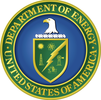News Release from U.S. Department of Energy (DOE)
Wind Industry Profile of
DOE Projects Will Accelerate Deployment of Small- and Medium-Sized Wind Turbines Across the United States
The U.S. Department of Energy’s (DOE) National Renewable Energy Laboratory (NREL) today announced it plans to award $2.9 million to 11 manufacturers of small- and medium-scale wind turbines. These awards will support technology innovation and mitigate market and regulatory barriers to deployment of distributed wind turbines for use by homeowners, farmers, businesses, and others under DOE’s Competitiveness Improvement Project (CIP).
“Competitiveness Improvement Project awards are helping small- and medium-scale wind turbines become a realistic option for rural residents and businesses alike,” said Alejandro Moreno, the acting assistant secretary for energy efficiency and renewable energy. “By driving down costs and improving technology, these projects can help create more resilient communities and support the Biden administration’s goals of reaching 100% clean electricity by 2035 and a net-zero emissions economy by 2050.”
Distributed wind energy—especially when combined with distributed solar power and, if needed, energy storage—can support local electrification and bolster the distribution system by increasing grid resilience and reliability. A potential scale-up of distributed wind energy could support near-term decarbonization for rural communities as well as agricultural, commercial, and industrial businesses in windy areas—especially in the U.S. Midwest and Heartland regions. Large-scale development of distributed energy resources also reduces reliance on the nation’s already constrained transmission network by providing power directly to end users.
Managed by NREL on behalf of DOE’s Wind Energy Technologies Office, CIP awards cost-shared subcontracts and technical support to manufacturers of small- and medium-sized wind turbines. These awards help manufacturers of wind turbines with less than one megawatt in capacity to:
- Optimize their designs to reduce costs, increase energy production, and enhance grid reliability, resilience, and compatibility with solar power and energy storage systems;
- Develop advanced manufacturing processes to increase production and reduce costs;
- Support distributed wind energy adoption through turbine and component testing for certification to national performance and safety standards; and
- Accelerate pathways for commercialization.
Once the 2022–2023 contracts are finalized, NREL will have awarded 64 subcontracts to 26 companies, totaling $15.4 million in DOE funding while leveraging $7.9 million in additional private-sector investment since CIP began in 2012. The project has helped to significantly drive down costs for distributed wind energy, including helping Bergey Windpower Company double the amount of energy produced by its Excel 15 wind turbine and cut its levelized cost of energy in half via awards over several years.
The companies selected for 2022–2023 CIP awards are:
- Bergey Windpower Company (Norman, Oklahoma): To increase access to its flagship 15-kilowatt (kW) wind turbine model, Bergey Windpower will develop an innovative financing solution to reduce upfront costs for residential customers in partnership with a major solar financing company.
- Carter Wind Turbines (Wichita Falls, Texas): Carter Wind Turbines will develop a 20% taller, 60-meter tower that will increase energy production and lower costs for its modernized 300-kW wind turbine. The project builds on past CIP awards aimed at opening a broader range of wind resources and applications for Carter Wind Turbines’ medium-scale turbine technology including remote and behind?the?meter industrial deployments.
- Eocycle America Corporation (Swanton, Vermont) has been selected for two new CIP awards, under which it will: 1. partner with large corporate agricultural organizations to develop business models for expanding the deployment of distributed wind energy across their properties and 2. complete electrical safety listing of the company’s Eocycle EOX S-16 turbine system to the UL 6142 standard.
- NPS Solutions (Darien, Connecticut): NPS Solutions plans to complete the UL 1741-SA power converter (inverter) electrical listing required for the U.S. market. This listing will demonstrate compliance of NPS Solutions’ 100-kW turbine technology with the latest grid interconnection safety standard, a new requirement for deployment in the U.S. market.
- Pecos Wind Power (Somerville, Massachusetts): Pecos Wind Power will develop the design and tooling for the fabrication of a 14.5-meter wind turbine blade that will lead to a lower-cost 85-kW wind turbine.
- Primus Wind Power (Lakewood, Colorado): Primus Wind Power will test six of its micro wind turbine models for certification to standards set by the American National Standards Institute, American Clean Power Association, and Federal Communications Commission.
- RRD Engineering (Arvada, Colorado): RRD Engineering will begin developing BladeRunner, an innovative 150-kW wind turbine that reduces technology costs through a simpler manufacturing process of blades and support structures and by using readily available materials.
- Sonsight Wind (Grayson, Georgia): Sonsight Wind will manufacture a permanent-magnet generator for its prototype 3.5-kW distributed wind turbine, advancing toward the goal of manufacturing a certified and cost-competitive small-scale distributed wind turbine.
- Windurance LLC (Coraopolis, Pennsylvania): Windurance LLC will design a modular energy storage solution that will be certified by a third party to the UL 1741 standard. The innovative, scalable design presents a solution for a wide range of distributed wind turbine sizes (15–160 kW) and applications.
- Windward Engineering (Spanish Fork, Utah): At a test site in Spanish Fork, Utah, Windward Engineering will install and test a prototype 60-kW, three-bladed, downwind, horizontal-axis wind turbine with independent pitch-to-stall control.
- Xflow Energy Company (Seattle, Washington): XFlow Energy Company will optimize its 25-kW, three-bladed, vertical-axis wind turbine, which was originally designed to address the needs of remote communities, to make it suitable for a wide range of customers in the U.S. grid-connected market.
Learn more about CIP.
Learn more about DOE’s work on distributed wind energy.
- Source:
- DOE
- Author:
- Press Office
- Link:
- www.energy.gov/...
- Keywords:
- DOE, USA, small, medium sized, wind turbine, accelration, Competitiveness, improvement, wind farm, technology, costs, reduction


























